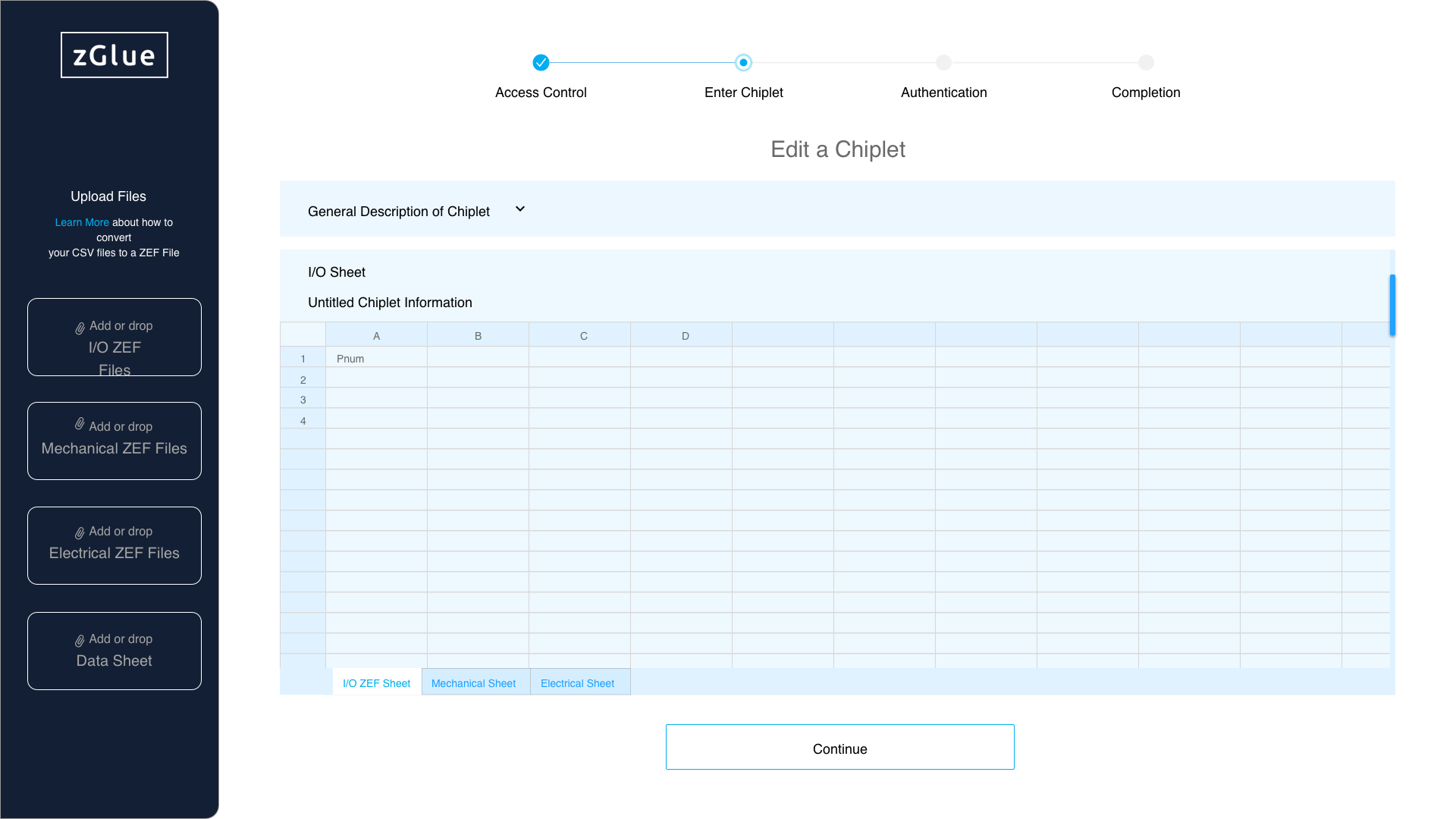
Results
Over 2200+ Chiplets listed publicly on the Chiplet Marketplace.
Chiplet Console integrated into the workflow of our engineers
Team
CTO, CEO, Head of Engineering, Director of Marketing and Designer
Duration
August - September 2019 (1 Month)








50 Responses
15 Architects
10 Executive Management
6 Business Development and Marketing
15 Engineering Management
10 Mechanical Engineers
4 Electrical Engineers
1 Hardware Engineers
1 Cloud Provider

Customers
Head of Engineering
Executives, Architects
• Invested in the future of Chiplets
• Drive revenue and growth, best interest to sell Chiplets
• Willing to share data if there is NDA and a good process
Users
Entry level Engineer
Intern Engineer
• Interested in a way to cut time taken to input Chiplet Data
• Wants to reduce human errors

Business Goals
1. Adoption by Chiplet suppliers in industry
2. Get Chiplet Data from suppliers to be listed

Product Goals
1. Save time and reduce errors
2. Access control: privacy / security


1. Access Control
Degree of privacy of data is ensured
in order to meet the interests of Chiplet Suppliers
2. Chiplet Entry
Entering of data that are marked as important information during market research
3. Submission
End screen to indicate to users that they can use the data for private / public use.
4. Chiplet Overview
An overview of chiplet data entered by users with tools to view and edit.

.png)






In order to get Chiplet suppliers to input data on our console, I wanted them to feel that they have control of privacy. In the first iteration, the “Access Control” was the first screen while “Entering Data” comes after
However, we noticed that the “Private” option was chosen more often if it was the first screen in the flow (as customers err on the safe side). After swapping it around, customers has a better idea of what specific data they’re setting the privacy for. A trade-off was then made to put “Enter Chiplet Data” first, in order to balance our business and product goal.



Making compromise: Initially I designed a prototype that looked closer to an excel sheet because that was what our users were used to.
To save time for front-end implementation, we’re reusing the already built out UI for the data entry for another design to we have for Chiplet Console.


During the observation sessions, we saw that engineers tend to split their screens into half when entering Chiplet Data. It was so that they were able to simultaneously read the Datasheet PDF while entering Chiplet data.
Responsive design: With this use case in mind, I designed a way to maximize the data entry viewport when a user minimizes the screen into half.







Project Definition
A proof-of-concept to support Chiplet suppliers in sharing their Chiplet Data with the industry
Business Goals
1. Adoption by Chiplet suppliers in industry
2. Get Chiplet Data from suppliers to be listed as public
Project Goals
1. Save time and reduce errors
2. Access control: privacy / transparency
Product Goals
1. Over 2200+ Chiplets available publicly on zGlue’s Chiplet Marketplace (https://chipletstore.zglue.com)
2. Chiplet Console integrated into the workflow of our engineers when receiving a client request to design a chip
Adoption by key players in the industry

Industry’s First Chiplet Store

Balancing product and business goals
This is tricky but when designing, we first priortize the value to the user as it creates a framework to start working on the product. We then break down the different aspects of the product and measure it against our business goals to see how we fare and balance the two goals.
Collaboration with Product Engineering
Involving engineering early in the process was crucial - From ideation, problem solving to time estimation. The ideas brought up during the whiteboarding session were great but was later also grounded through engineering input. E.g web scraping to save time -> 3 year est. time project VS a project we want to ship fast and early to get feedback from ODSA (key community in industry) and partners. Other great ideas like 3D Visual QA was planned for the future.
Designing for B2B + highly technical industry
Compared to consumer products, designers may make certain assumptions but in this case, building it from ground up in a highly technical industry was a different experience. When designing, edge cases could no longer be assumed as there is complete a lack of knowledge. Listening and observing users was key.
Speaking the same language + storytelling
Lastly, one of the most important takeaway was to connect and build relationships with the different cross-functional teams. This greatly helps when getting buy-ins from stakeholders and exchaging ideas with product engineering. Especially coming from a non-technical background, it is easy for our voices to be less heard hence building relationships is key to collaboration in a highly technical industry.

Thank you to the team
CEO - Ming
CTO - Jawad
Head Engineer - James
Director of Marketing - Kelly
Product Designer - Evangeline
Thank you for reading
For a presentation of this project, feel free to email me.